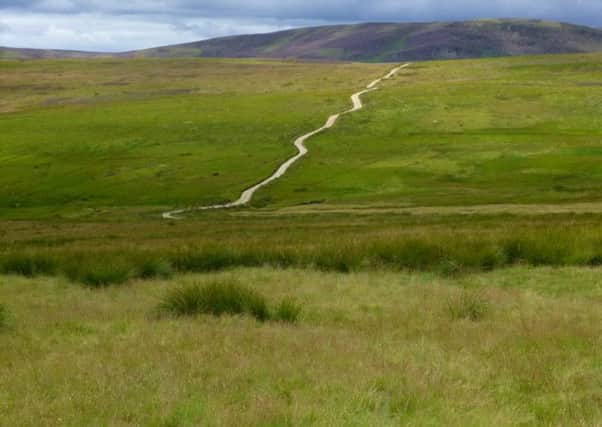Battle for control of iconic landscape


The ownership and use of Scotland’s natural resources are at the centre of the independence debate. A natural resource that is too often overlooked, however, is the land itself. Internationally famous, central to Scotland’s identity, but relatively empty, Scottish landscapes have immense cultural, environmental and economic value – and a potential that is much greater still.
The Scottish Government faces a number of decisions that hinge on whether land is chiefly regarded as a common resource in which all of Scotland’s people have legitimate interests, or a private resource mainly subject to the interests of large landowners and companies.
Advertisement
Hide AdAdvertisement
Hide AdThe government’s response to the Land Reform Review Group’s final report will reveal its position on these issues, and will also go some way to defining its vision for Scotland’s future. A number of smaller, less complex decisions are, meanwhile, likely to be equally revealing.
One of these decisions concerns the construction of “hill tracks”. At the moment, tracks with a claimed agricultural or forestry purpose (purposes that are not properly defined in the legislation and, in the case of agriculture, effectively impossible to disprove) have pre-emptive planning permission.
Forestry tracks are regulated to a certain extent by the Forestry Commission, but landowners and managers can construct “agricultural” tracks almost anywhere in Scotland without consulting anyone or meeting particular standards.
While residents of rural communities with plans to alter their house or garden are subject to the full rigours of the planning system, nearby landowners can (and do) freely take bulldozers to hillsides and dig huge, meandering tracks that significantly lessen the aesthetic, environmental and economic value of the area to everyone else. Nobody has a formal right to object and the closest thing to regulation is a set of advisory guidelines issued by Scottish Natural Heritage – that has been widely ignored for years.
If this sounds like an incredible (not to say indefensible) degree of freedom to allow one particular group, at the expense of the wider community, that’s because it was originally granted nearly 70 years ago, at a time of national emergency. At the end of the Second World War rapid intensification of forestry and agriculture were in the national interest, and so “minor” developments such as tracks for those industries were exempted from the normal planning process.
Since then, machinery has become far more powerful and easily available, and tracks have been bulldozed far more widely as sporting estates take advantage of the agricultural dispensation.
Many tracks are the width of major roads, cut deep into peat and rock, and run for tens of miles through National Parks and over some of our highest summits. Peat bogs are drained and dried, huge quantities of silt are washed into sensitive and protected rivers, iconic landscapes scarred and ancient footpaths destroyed.
Meanwhile, the economic value of Scotland’s landscapes and environments has rocketed, with 90 per cent of visitors here giving scenery as a major reason for their visits, contributing significantly to the £11 billion that tourism generates for the Scottish economy. There is no possible justification for tracks to be effectively unregulated in this context.
Advertisement
Hide AdAdvertisement
Hide AdSuccessive governments have, nevertheless, so far, chosen not to close the loophole, and the law remains designed for a 70-year-old post-war emergency. A recent government consultation resulted in no action being taken, despite “compelling evidence” of damage caused under the current system being received. More evidence was requested, and organisations working together through Scottish Environment LINK duly supplied it, in the form of the recently published Track Changes report.
The debate continues to revolve around this evidence: tracks that amount to little more than environmental vandalism are identified, and countered with examples of tracks voluntarily built to high standards by responsible estates. More and more tracks are being hastily dug into the countryside as this drags on, and the resulting mess is only cleared up when charities such as the National Trust for Scotland or private estates like Glenfeshie do so at their own expense.
This is not, however, a matter of evidence alone, but a matter of principle also. First, Scottish land and landscapes are national resources that nobody should be allowed to damage without some minimum of oversight and adherence to minimum standards. Second, people and communities affected by changes to their surroundings should, at the very least, have the right to object.
It is these fundamental principles of democracy and environmental justice that explain why the campaign for change is supported by almost all of Scotland’s environmental groups, public opinion, several MSPs of different parties and, privately at least, some estates and forestry interests. This is also why the government’s decision about whether to take action should be so easy to make, and why its eventual choice will reveal so much about where it thinks power over Scotland’s land should lie.
• Calum Brown is a member of the Scottish Wild Land Group’s steering team
www.scotlink.org
SEE ALSO